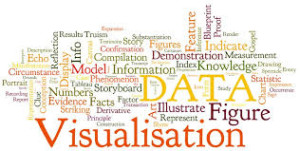30 March 2016 – I returned to Brussels this week after a two-week sojurn in Rome, part vacation/part work. While there I attended an MIT Media Lab event on Big Data. The focus was not the ability to process and manage large data volumes but the ability to integrate and “see” more sources of data than ever before — new data, old data, big data, small data, structured data, unstructured data, social media data, behavioral data, and legacy data.
The presenters called it the “variety challenge” and it has emerged as the top data priority for mainstream companies. A Big Data Executive Survey, conducted by MIT and NewVantage Partners (canvassing 880 companies in the Fortune 1,000) revealed variety trumps volume and velocity. 72% of corporate executives responding to the survey said greater data variety was the most important factor, followed by volume (25%), with velocity (6%) trailing.
In the corporate world, the big opportunity is to be found in integrating more sources of data, not bigger amounts. And visualizing it. And using it.
For my e-discovery readers, yes, we know. For most people on the doc review team, the focus is just sorting and organizing – putting everything into little piles until the case settles or the next project comes along or the documents run out.
But for the people who actually need to use the data, sometimes having 50,000 documents tagged “knowledge of danger” is of little use because it still leaves you with a big pile to sort through. So, as more data gets accumulated, the legal community needs to look at more creative ways to sort and organize it so that it can actually be used.
And that’s where data visualization comes in and why there has been a surfeit of dashboards, data visualization tools, etc. at LegalTech the last few years. As predictive coding, machine learning, and review come together, the need for narrative in the e-Discovery process becomes paramount and visualization is a key part. It is why certain vendors and staffing agencies have moved beyond the “click, code and close” process to assemble high-level data swat teams.
I see it in all my other ventures, too. Every year my team goes to the International Journalism Festival in Perugia, Italy. It is the best of its kind. Over the last few years there has been a major focus on the emergence (ok, the explosion of) “data journalism”. No doubt: journalism has been thoroughly disrupted over the past decade. News organizations, especially newspapers, have come under heavy financial pressure, news bureaus have been closed or consolidated and journalists have had to rethink their profession. Yet amidst the rubble a new form of the craft has emerged: data journalism. Rather than pounding a physical beat and cultivating human sources, this new breed immerses itself in statistical data and policy papers. And how to visualize it, how to build compelling narrative out of that visualization.
For me the most helpful sessions in Perugia are the ones on information architecture. Information architecture relates to the interpretation and expression of information for complex delivery systems. For journalists, systemic, structural, and orderly decisions are paramount to a good story and ease of use. You need to bring it all together. Consider how the individual parts of a story are consumed and whether they make sense independent of the package. Due to the fact that most multimedia presentations are nonlinear, each user may take a different path through the stories we construct.
And for the last two years … surprise!! … e-discovery vendors have come to learn and participate.
Which brings me to a marvelous program coming May 13th to London. The Innovation Enterprise Academy has partnered with Guardian Masterclasses to bring you “Data Visualisation: A One Day Workshop”. The Guardian Masterclass series are fabulous events (I have done 6 across a wide-range of subjects) and I highly recommend you do the data viz program if you are in London that day. And note: they only accept 38 people!
From the brochure:
Data visualisation is transforming communications, enabling private, public and third sector organisations to make the most of data sets to tell complex stories at a glance. Now you can learn how to harness its potential, refining raw data into high-impact communications, presentations and analyses.
What you will learn:
Principles of Data Visualisation
How to use data visualisation in presentations and reports to tell stories. Includes:
Relationships in data: when and how to use data visualisation
What makes good – and bad – data visualisations
Quick wins and common mistakes
Data Visualisation Formats
Identify correlations, clusters or patterns and turn them into infographics. Covers:
Different types of charts and graphs (e.g. scatter plots, bubble graphs, pie charts)
How to easily identify which format to use for which story
Splitting data between different visualisations
Design Techniques
Understand how to present data in the clearest manner. This session will cover:
Using colour to add clarity
Arranging information
Simple tricks to make your designs look brilliant
Software and Online Tools
This session will cover the key steps for maximising different software, including:
Getting your data in order with Excel
Using Powerpoint and Keynote simply and effectively
How to use online tools such as Prezi and Datawrapper
Getting Creative and Telling Stories with Data
Understand how to apply professional techniques to presentations and reports, including:
Mining data to find stories
How different storytelling approaches can be applied to the same data
How audiences read and interpret visual stories
For all the details on the one-day program click here. Hope to see you there.
